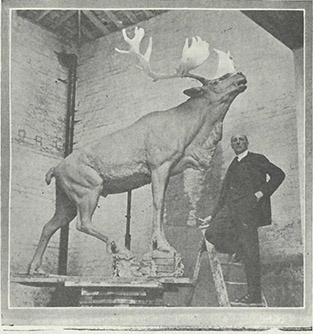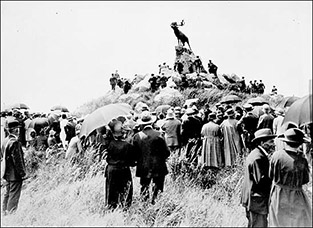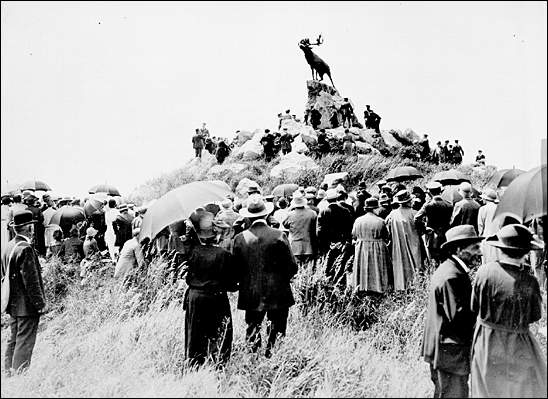Design and Construction
The Battle of Beaumont-Hamel in 1916 was a defining moment in Newfoundland history and remains an enduring symbol of the province's wartime experience. Following the First World War, the site of the battle was an obvious choice for a monument commemorating all Newfoundlanders who served, particularly those with no known final resting place.
Did you know?
Newfoundland didn't join Canada until 1949. As a result, Newfoundlanders serving in the First and Second World Wars did so on behalf of the Dominion of Newfoundland as part of the British Commonwealth. Following the First World War, the province built a National War Memorial in St. John's, designated July 1st as Memorial Day (a tradition still observed today), and constructed a number of monuments and memorials commemorating the service and sacrifice of its people—including the Beaumont-Hamel Newfoundland Memorial.
Commemorative efforts in Newfoundland were led by Lieutenant-Colonel Father Thomas Nangle, a former Roman Catholic Padre of the Newfoundland Regiment, who was appointed as Newfoundland's representative on the Imperial War Graves Commission in July 1919. He was given the responsibility of determining what Newfoundland’s overseas war memorials would be like, and overseeing their design and construction.
By 1921, after negotiating with some 250 French landowners, Nangle had secured the purchase of more than 30 hectares of the ground over which the Newfoundland Regiment had made its heroic advance at Beaumont-Hamel. A far-reaching fundraising campaign followed that encouraged families across Newfoundland to contribute funds to the construction of memorials at home and abroad.
British sculptor Captain Basil Gotto's memorial design featuring a distinctive bronze caribou (emblem of the Royal Newfoundland Regiment), was selected from among 16 proposals submitted to Lieutenant-Colonel Nangle. Six of the sculptures were cast in total, with one installed at each of Newfoundland's five battlefield memorials in France and Belgium (known collectively as The Caribou Trail) and the sixth at Bowring Park in St. John's, Newfoundland and Labrador.
Mr. Rudolph H.K. Cochius, a native of the Netherlands living in St. John’s, was selected as landscape architect and supervised the design of all of Newfoundland's overseas memorial sites, as well as Bowring Park in St. John’s. The bronze caribou at Beaumont-Hamel was placed atop a high mound that was created close to where the Headquarters dugout of the 88th Brigade (of which the Newfoundland Regiment was part) had been located. Its head held high, it faces the direction of its former foe and overlooks the trenches and ground across which the Battalion had advanced.
At the base of the mound and surrounded by rock and shrubs native to Newfoundland, three bronze tablets bear the names of some 820 members of the Royal Newfoundland Regiment, the Newfoundland Royal Naval Reserve and the Mercantile Marines who gave their lives in the First World War and whose final resting places were then unknown.
The Beaumont-Hamel Newfoundland Memorial was officially dedicated on June 7, 1925, by Field-Marshal Earl Douglas Haig, Commander of the British Expeditionary Force during the Battle of the Somme.
The site was declared a National Historic Site in 1997 and, with the Canadian National Vimy Memorial, remains one of only two such locations outside of Canada. On July 1, 2001, a Visitor Centre was opened, providing important historical and social context for visitors from around the world. In 2016, Thomas Nangle was designated a nationally significant person by the Historic Sites and Monuments Board of Canada in recognition of his tireless efforts to keep alive the memory of Newfoundlanders’ sacrifices in the First World War and the places embodying those sacrifices.
- Date modified:



